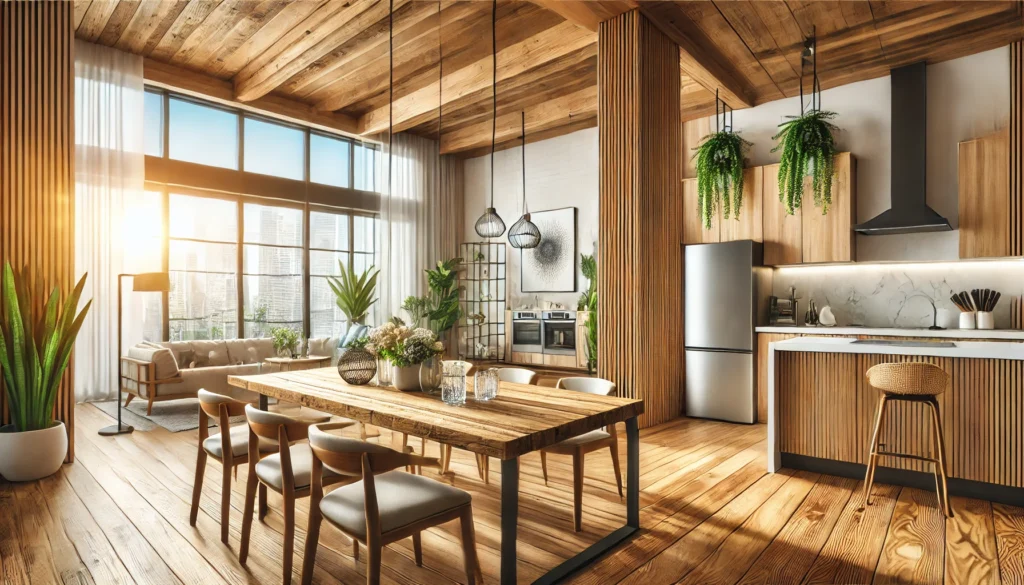Renovating your home offers a fantastic opportunity to rethink your material choices and opt for sustainable alternatives. By using eco-friendly building materials, you can minimize environmental impact, improve energy efficiency, and create a healthier living environment. Sustainable materials often come with the added benefits of durability and cost savings in the long run. In this article, we explore some of the best sustainable building materials you can incorporate into your next renovation project.
Why Choose Sustainable Building Materials?
Sustainable building materials are designed to reduce the depletion of natural resources and lower greenhouse gas emissions associated with traditional construction practices. Here are a few reasons why making the switch to sustainable materials is worth considering:
- Environmental Benefits: Sustainable building materials help conserve resources, reduce waste, and limit energy consumption during production.
- Cost Savings: Many eco-friendly materials, such as insulated concrete forms or energy-efficient windows, lead to lower utility bills over time.
- Healthier Living Spaces: Sustainable materials often emit fewer volatile organic compounds (VOCs), improving indoor air quality.
- Enhanced Durability: Many eco-friendly options are designed to last longer, reducing the need for frequent repairs or replacements.

Top Sustainable Building Materials for Renovations
1. Bamboo
Bamboo is one of the most sustainable building materials available due to its rapid growth rate and renewability. Unlike hardwoods, which can take decades to mature, bamboo can be harvested in as little as three to five years.
- Applications: Ideal for flooring, cabinetry, and decorative elements.
- Benefits: Durable, lightweight, and resistant to moisture.
- Eco-Factor: Requires minimal water and no pesticides to grow, making it a highly sustainable choice.
2. Recycled Steel
Steel is a popular choice for structural elements like beams, roofing, and framing. Opting for recycled steel reduces the demand for mining and conserves significant energy.
- Applications: Structural support, roofing, and reinforcement.
- Benefits: Incredibly strong and long-lasting.
- Eco-Factor: Produces up to 75% less energy during production compared to new steel.
3. Cork
Cork is harvested from the bark of cork oak trees, which regenerate their bark, allowing for sustainable harvesting without damaging the trees.
- Applications: Flooring, wall tiles, and insulation.
- Benefits: Naturally anti-microbial, sound-absorbing, and heat-resistant.
- Eco-Factor: Fully renewable and biodegradable, with low environmental impact.
4. Reclaimed Wood
Using reclaimed wood involves repurposing timber from old buildings, furniture, or other sources. This process saves trees and gives new life to materials that would otherwise be discarded.
- Applications: Beams, flooring, furniture, and panelling.
- Benefits: Adds a rustic or vintage aesthetic while reducing waste.
- Eco-Factor: Significantly reduces deforestation and waste in landfills.
5. Insulated Concrete Forms (ICFs)
ICFs are modular blocks made from recycled materials, often used to construct energy-efficient walls. They are easy to install and provide superior insulation.
- Applications: Walls and foundations.
- Benefits: High thermal resistance, reducing heating and cooling costs.
- Eco-Factor: Utilizes recycled materials and improves energy efficiency.
6. Recycled Glass
Recycled glass is a versatile material that can be used for countertops, tiles, and decorative finishes. It’s made by melting down glass waste and reforming it into new products.
- Applications: Countertops, tiles, and backsplashes.
- Benefits: Durable, easy to clean, and available in a wide range of colours and styles.
- Eco-Factor: Reduces the need for new glass production and keeps waste out of landfills.
7. Low-VOC Paints
Traditional paints often contain volatile organic compounds (VOCs), which can negatively affect indoor air quality. Low-VOC paints are a healthier alternative.
- Applications: Interior and exterior walls.
- Benefits: Reduces harmful emissions and odours.
- Eco-Factor: Minimizes air pollution and enhances indoor air quality.
8. Hempcrete
Hempcrete is a bio-composite material made from hemp fibres, lime, and water. It’s lightweight yet durable and has excellent insulation properties.
- Applications: Walls, insulation, and flooring.
- Benefits: Regulates indoor humidity and is mold-resistant.
- Eco-Factor: Carbon-negative, as hemp absorbs more CO2 during growth than is emitted during production.
9. Solar Panels
While not a traditional building material, solar panels are an excellent addition to any renovation aimed at sustainability. They harness renewable energy to power your home, reducing reliance on non-renewable resources.
- Applications: Roofs and standalone installations.
- Benefits: Long-term energy savings and potential incentives.
- Eco-Factor: Produces clean energy with no emissions.
How to Source Sustainable Materials
When choosing sustainable building materials for your renovation, it’s important to work with reputable suppliers who prioritize environmental responsibility. Look for certifications such as:
- FSC (Forest Stewardship Council): For responsibly sourced wood.
- LEED (Leadership in Energy and Environmental Design): For environmentally friendly building practices.
- Energy Star: For energy-efficient appliances and fixtures.
Additionally, consider sourcing locally to reduce transportation-related emissions and support your local economy.

Tips for a Sustainable Renovation
- Plan Ahead: Identify areas where sustainable building materials can be incorporated early in the design process.
- Focus on Energy Efficiency: Combine sustainable materials with energy-efficient technologies like smart thermostats and LED lighting.
- Reuse and Recycle: Incorporate salvaged or reclaimed materials wherever possible.
- Work with Experts: Partner with contractors experienced in sustainable construction to ensure best practices are followed.
Conclusion
Renovating with sustainable building materials is a powerful way to reduce environmental impact while creating a beautiful, functional, and cost-effective space. Whether you’re choosing bamboo flooring, reclaimed wood, or installing solar panels, every step you take toward sustainability contributes to a greener future.
By prioritizing eco-friendly options, you’re not only improving your home but also making a positive difference for the planet. Start planning your sustainable renovation today and join the movement toward a more sustainable world!


